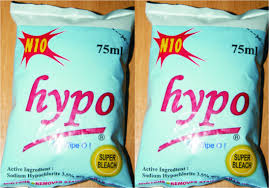YSR – Design for extreme affordability: An oft-ignored wonder strategy

“My articles are basically targeted towards young people who have access to so much information especially as a result of information overload from the internet and this in turn makes them restless a s a result of the many options available. My articles would mainly be on providing clarity based primarily on my personal experiences and a mix of other content.”
With
David Apaflo, ACA
David, a chartered accountant, is one of the founding partners of Shelze Consulting. He also shares his thoughts on his personal blog
This article is targeted towards people who have been flipping business ideas in their minds. Sometimes it is not so hard. Take some old stuff and add one small twist
Design! What does it really mean to design and what does it mean to design for extreme affordability?
I came across that phrase at a Stanford GSB event earlier this year where someone was talking about Stanford’s D-school and how they teach their students “Design for Extreme Affordability”.
I left that program fascinated about that and started some research into that area. Surprisingly, this concept had been all around me but I never realized it!
You might be lost and would really want to understand in the first place how design for extreme affordability works. Let me put it like this: it is simply using design thinking methods, to develop products and services that serve the needs of the world’s poor.
This is a business strategy which when applied to already existing products result in a surge in revenues and profits. Many times, when we think of innovation we think it means coming up with an entirely new product. Innovation can simply be selling old products in a new way!
What key examples of this strategy can we find around us?
- Sachet powdered milk vs tin powdered milk (Peak, Cowbell);
- Sachet alcoholic drinks vs bottled alcoholic drinks (Alomo, Ogidiga);
- Bobo vs Viju;
- Satchet bleach vs bottled bleach (Hypo, Jik);
- And more recently, the new 25 naira gala!
How does this strategy really work?
I would explain this with a very basic illustration:
A tin of powdered milk costs N1,000 and lasts for 50 days. Ade is a welder and is into body building so he is required to have some milk in his diet regularly. However, he has one challenge – finance. He is paid a daily wage of N200 and cannot shell out N1,000 immediately to buy a tin of milk even though he really needs it.
With products designed for extreme affordability, companies now package milk in smaller packages – sachets. This way, Ade can buy his milk on a daily basis for N30.
In a fifty day cycle, Ade spends N1,500 on milk and even more expensive than N1,000 for a tin of milk but he doesn’t care. The new products meet him at his level.
At the end of the day, the milk manufacturer makes more money off Ade.
To think that there are billions of people in the world who are poor, this new way of thinking helps both parties – the companies and the people.
The task for you is simple. How can you deliver current services which are needed by the world’s poor but are too expensive for them to afford? How can you use technology, design, creative problem solving to help the world?
Think on these things.
DA.
Other articles by David
*****************************
You may also want to read Jarushub’s widely acclaimed hit article: Common Interview Questions and Answer Tips
Excellent CV writing is one of Jarushub Premium Services
Registration is also on for the 2nd Jarushub Career Conference
Established in March 2013, JarusHub is a Nigerian information hub with focus on career and management. It is rated Nigeria's most authoritative destination for online career resources. It parades an array of Nigerian professionals who share their career experiences with a view to bridging career information gap and mentoring a generation to success. Whether you're a student, a recent graduate or an established professional, or even an executive, you will always find something to learn on JarusHub. All enquiries to jarushub@gmail.com or 0808 540 4500. Facebook: www.facebook.com/jarushub; Twitter: @jarushub or @mcjarus.
Career Q&A with Jarus: Oil & gas career, poor CGPA
September 17, 2023What is Career Counselling? How to choose the Right Career?
October 24, 2022Career Advice: Play to Your Strength
March 6, 2022
4 comments
Let us have your say by leaving a comment belowCancel reply
Recommended For You
-
A MANUFACTURING COMPANY NEEDS ACCOUNTING & MARKETING OFFICERS
January 19, 2015 -
WHAT TO DO TO GET A JOB YOU’RE NOT QUALIFIED FOR
May 26, 2015 -
COMPANY REVIEW: StanbicIBTC
April 19, 2018










You also need to consider when the cheapest MTN recharge card was N1500, Econet’s cheapest was N1000.
When Glo came on board, they started selling for as low as N500. This made MTN and Econet now Airtel to offer cheaper recharge cards of N100, N200 and N500. I guess this must have translated to a positive bottom line by the companies.
Promasidor the makers of Cowbell came to Nigeria in the early 90s. WAMCO the makers of Peak milk and three crown milk was the market leader in production and marketing of milk. Other popuar brands in the 90s were Nido and Dano.
The guys in the marketing department of Promasidor are really innovative, they introduced the smmaller sachet of powdered milk into the Nigerian market around 1993. This innovation made students, artisans and other low income earners to madfe introduce milk consumption into their daily menu. This made the market share of cowbell to expand exponetially.
That is why I believe any investor or entrepreneur that can build and sell houses that can be affordable by the majority of the working population, will end up making billions of Naira.
Another example that readily comes to mind is Tecno with its series of affordable Android phones.
Any business strategy that puts the needs and financial strength of every echelon of the society into consideration is, no doubt, an excellent one.
[…] Design for extreme affordability: An oft-ignored wonder strategy […]